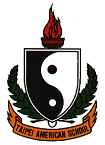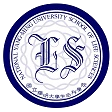Team:NYMU-Taipei/project/4c
From 2014.igem.org
Purpose
The killing part in our fourth C, "completion", is to eliminate the Streptococcus Mutans that phages are unable to infect. When the amount of the S.mutans is so large that the phages can't afford the loading, the signal-detecting competence simulating peptide(CSP) would pass the threshold value and turn on the communication signal, thereby simulating the promoter of the killing part. The signal sequence and endolysin downstream would be secreted and this will eliminate the excess S.mutans.
Background
To start with, N-acyl homoserine(AHL) is a general quorum sensing material in gram negetive bacteria. The AHL we found is exists particularly in V. fischeri, and has been successfully utilized in many gram negative bacteria, including E.coli, in many papers and previous iGEM teams. It can move through E.coli membrane without any extra help. Also, as a gram negative bacteria, E.coli doesn't naturally secrete substance into extracellular environment, except for some toxins. Therefore, secreting proteins out of membrane in non-toxin experimental strain would be much harder. There are few types of secretion pathway in bacteria, and the most common ones would be typeI and typeII. However, common experimental strain doesn't apply to the typeI pathway. Furthermore, single signal sequence in type II secretion only leads the recombinant protein to the periplasm region. Therefore, it is difficult to choose a short sequence efficiently to bring our product through the E.coli membrane. Endolysin is an enzyme expressed by phage-infected bacteria. The C-terminus bind to the host cell wall, while the N-terminus is enzymatic domain. Working with holin, which lyses cell membrane, endolysin could break the cell wall of bacteria. While it usually serves as peptidase, endolysin sometimes tends to work on gram negative species, which have layers of peptidoglycan cell wall. Though originally intended to be utilized inside the cell wall, endolysin can also be applied outside the cell as many papers have shown. Furthermore, since the lipid layer of the bacteria composes the cell wall, gram negative bacteria is not as harmful as it was previously.
Design
!figure not yet!
LuxpR promoter
The promoter of the circuit is in charge of the communication between phage and E. coli communication. Induced by AHL-luxR complex, the promoter could turn on the expression of downstream coding sequence once the SOS signal(AHL) is spread by phage.
(RBS)yebF
yebF is a protein that is naturally secreted by E.coli. Research has found that recombinant protein linked to the C-terminus of this signal sequence can be effectively secreted to extra-cellular region, with various size and hydrophobicity, though not cleaved. Though the mechanism is not well understood, we assume that it would lead to periplasm with the signal domain in the front region of the protein, and later secreted through porin on the cell wall. The advantage of the signal sequence is that it can be secreted in experimental strains which usually do not secrete proteins, along with other diverse passenger characters.
M102-ORF19
There is a set of open reading frames in S. mutans phage M102 that is responsible for endolysin production and activation, which is the region containing opening reading frame 18-20. With the eighteenth open reading frame producing holin that destroys the cell membrane, the endolysins expressed by the 19th and 20th opening reading frame are able to contact and lyse cell wall. While the phage usually encodes one endolysin and comprises all ability to lyse cell wall, M102 has two open reading frames, the 19th and 20th, allowing it to encode two different endolysin to break the cell wall of S. mutans. The endolysin translated by the 19th opening reading frame is glucosidase, which can break the polysaccharide capsule of Strepptoccocus cell wall. The N-terminus, in charge of cell wall binding, has different amino acid coding with other endolysins, indicating its specificity. The 20th opening reading frame encodes pepdoglycandase and has CHAP domain, which is usually involved with endolysin. In our experiment, we would first test if the 19th open reading frame is enough to do harm to the Strepptoccocus Mutans. If it is not fatal, we would consider the 20th open reading frame for further experimentation.
B0015
A double terminator composed of B0010 and B0012. It has used by many iGEM teams, and have strong terminating force.
Functional Measurement
-
To test if the signal sequence,yebF works, two circuits needed to be constructed,
- J23100-(RBS)yebF-RFP-terminator
- J23100_RFP-terminator
Transform both circuits to Escherichia coli, and grow the modified E.coli liquid culture overnight.
Adjust the two cultures to the approximate OD value.
Centrifuge the cultures and extract the supernatants.
If the YebF signal sequence does work, the E.coli supernatant containing first circuit should be red while the second circuit having normal culture color. - Testing if the endolysin works, two circuits also needed to be made,
- J23100-(RBS)yebF-M102 orf19-terminator
- J23100-(RBS)yebF-terminator
Transform both circuits to Escherichia coli, and grow the modified E.coli liquid culture overnight.
Adjust the two cultures to the approximate OD value.
Centrifuge the cultures and extract the supernatants.
And disk plate assay would be used to test the antimicrobial activity.Result
Reference
- (2006)"Extracellular accumulation of recombinant proteins fused to the carrier protein YebF in Escherichia coli"
- (2007)"ACES™ Signal Sequence and YebF Expression Systems Technical Brief"
- (2012)"A Protein Export Pathway Involving Escherichia coli Porins"
- (2006)patent" PROTEIN PRODUCTION METHOD UTILIZING YEBF "
- (2007)"Genome sequence of Streptococcus mutans bacteriophage M102"
- (2012)''Biology and Genome Sequence of Streptococcus mutans Phage M102AD''
Completion-Antibiofilm Purpose
Streptococcus Mutans will form biofilms, a polymeric conglomeration generally consists of extracellular DNA, proteins, and polysaccharides. Biofilm is known for causing dental plaque, tooth decay and gum infection. Also, biofilm make it hard for our engineered probiotics to capture and kill the streptococcus mutans inside our mouths. Nowadays, the most basic way of removing biofilm is by physical methods such as brushing one's teeth regularly. However, there are many people who are not able to do so themselves, so we wanted to innovate and create a biological method to get rid of biofilms with our engineered probiotics. Therefore, we are going to design a circuit that produce several enzymes to destroy biofilm structure.
Background
Extracellular polymeric substance (EPS) is important in the formation of biofilm. The EPS matrix consists of polysaccharides, proteins and nucleic acids. The dense extracellular matrix of the biofilms and the outer layer of cells protect the interior of the community, and in some cases, even increase antibiotic resistance. Even though the biofilm seem to be robust, we found that enzymatic degradation is able to weaken the biofilm structure.
As mentioned before, we are going to use antibiofilm enzyme as our tool. According to 2012 INSA-Lyon and HIT-Harbin iGEM teams, we decided to use lysostaphin as our ideal enzyme. Lysostaphin has activities of 3 enzymes, including glycylglycine endopeptidase, endo-β-N-acetyl glucosamidase and N-acteyl muramyl-L-alanine amidase. Those enzymes can cleave the glycine–glycine bonds, which form cross links between glycopeptide chains in the cell wall peptidoglycan, and cleave the peptidoglycan of a backbone made up of alternating β-1,4 linked N-acetylglucosamine and N-acetylmuramic acid residues as well.
Design
Functional Measurement
Result
Reference
Completion-Indicator Purpose
Background
Chassis
Design
Functional Measurement
Result
Reference
 "
"




















